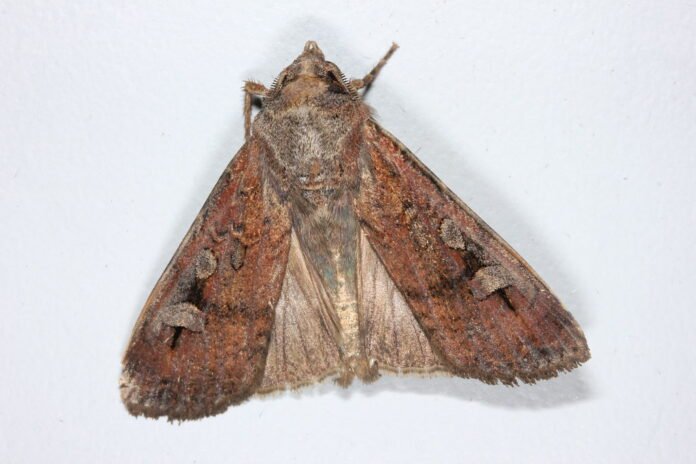In a groundbreaking study published this week in Nature, researchers have demonstrated that Australia’s iconic bogong moths use both celestial cues and the Earth’s magnetic field to chart their remarkable annual migrations. The findings not only overturn longstanding assumptions about invertebrate navigation but also highlight just how sophisticated these tiny insects truly are.
A Nocturnal Journey of a Thousand Kilometres
Each year as spring warms Australia’s south-eastern plains, millions of bogong moths (Agrotis infusa) take to the air under the cover of night. Over the course of several weeks, these insects travel up to 1,000 kilometres to seek refuge from the summer heat in high-altitude caves and rocky outcrops of the Australian Alps. Their return migration in autumn, when they descend to breed and then perish, completes a life cycle that has puzzled scientists for decades.
The Celestial Compass Hypothesis
Early research on nocturnal bird migrations in the 1960s and ’70s—most notably by astronomers and ornithologists in Europe—showed clear evidence that many night-flying birds navigate by the stars. Given that bogong moths also migrate exclusively by night, Professor Eric Warrant of Lund University and his colleagues hypothesised that moths might employ a similar strategy.
Building a Moth-Sized Planetarium
To test the theory, Warrant’s team constructed a bespoke flight simulator in the Snowy Mountains region of New South Wales. The apparatus was a cylindrical enclosure roughly half a metre across, lined with soft black felt to absorb stray light and eliminate visual distractions. Above the moths, a miniature planetarium projected a realistic night sky, complete with stars, constellations and the Milky Way.
Researchers captured wild moths mid-migration and gently tethered them at the simulator’s center. Even in captivity, moths instinctively attempted to “fly,” beating their wings and orienting themselves as if on their true migratory path. “They weren’t just fluttering randomly,” Warrant said. “They maintained steady headings for minutes at a time.”
Disentangling Magnetism from Starlight
Previous work had already shown that bogong moths detect the Earth’s magnetic field, probably via magnetic sensitivity in specialized cells in their antennae or brain. To isolate the role of starlight, the team used Helmholtz coils—metallic loops generating magnetic fields—to cancel out ambient geomagnetic input inside the simulator. With magnetic cues neutralized, any directional preference displayed by the moths could only come from visual celestial patterns.
In a series of rigorous experiments conducted across two spring and two autumn seasons, the researchers manipulated the projected sky. In some trials, they rotated the entire starfield by 180 degrees. Remarkably, the moths adjusted their headings accordingly—if the rotated sky suggested “south” lay where “north” had been, the moths turned and flew in that new direction. When the star patterns were scrambled so that recognizable constellations and the Milky Way were absent, the moths became completely disoriented, flying in no consistent direction.
Neural Correlates of Celestial Navigation
To confirm that the insects’ brains were actively processing the star cues, the team implanted microelectrodes into the central complex of the moths’ brains—a region known to be involved in spatial orientation and steering. As they rotated the sky, recordings revealed bursts of neural activity in two key regions: one cluster responded to changes in visual input, while another fired in patterns linked to flight direction. The strongest signals occurred when the moths faced southward—the direction they must travel in spring to reach the Alps.
Implications for Invertebrate Intelligence
Dr. Kate Umbers, an associate professor of zoology at Western Sydney University who was not involved in the study, called the findings “a great weight of evidence” that bogong moths undertake true navigational flights rather than being simply blown by prevailing winds. “This research shows that insects can integrate multiple sensory cues—magnetic and visual—to guide incredibly precise long-distance journeys,” she said. “It’s a powerful reminder that we’ve long underestimated invertebrate cognition.”
Conservation Concerns and Future Directions
Bogong moth numbers have plummeted in recent years, with habitat loss, climate change and pesticide use all suspected factors. Yet Australia’s federal environment laws have not afforded them protected status, in part because critical aspects of their biology—such as these navigation mechanisms—remained poorly understood. Umbers argued that this new knowledge should inform conservation strategies. “If we know precisely how moths find their overwintering caves, we can better predict the impacts of artificial light pollution or landscape changes that disrupt their celestial cues,” she said.
Public participation may also aid research and conservation. Citizen-science initiatives like Bogong Storytellers invite people to share observations of moth swarms or sightings near alpine caves. Combined with remote tracking technologies, such community data could paint a more complete picture of bogong migration and its vulnerabilities.
A Universal Marvel of Migration
Professor Warrant reflected on the broader meaning of the study: “Here we have an insect with a brain no larger than a poppy seed, yet it navigates by the stars and magnetic fields to a destination it has never before visited. That’s extraordinary.” He noted that while bird and insect migrations may seem worlds apart in scale and sophistication, both rely on ancient celestial and geomagnetic compasses honed by evolution.
As climate change and human development continue to alter night skies and magnetic environments, understanding these natural navigation systems becomes ever more urgent. For bogong moths, whose life cycle connects lowland farmlands and mountain refuges, each successful migration sustains both ecosystem processes and Indigenous cultural traditions that celebrate their swarms.
Looking Upward—and Forward
In a world increasingly disconnected from the rhythms of nature, studies like this one can rekindle a sense of wonder. “When I look at the night sky now, I’ll think not only of Voyager spacecraft or ancient Polynesian wayfinders,” Dr. Umbers said. “I’ll also remember the humble bogong moth, charting its path by starlight through the heart of Australia.”
With their secret revealed, bogong moths remind us that even the smallest creatures can teach profound lessons about navigation, adaptation and the delicate interplay between life and the cosmos.
READ MORE: Gauging Maternal Productivity in Australia’s Rangelands
